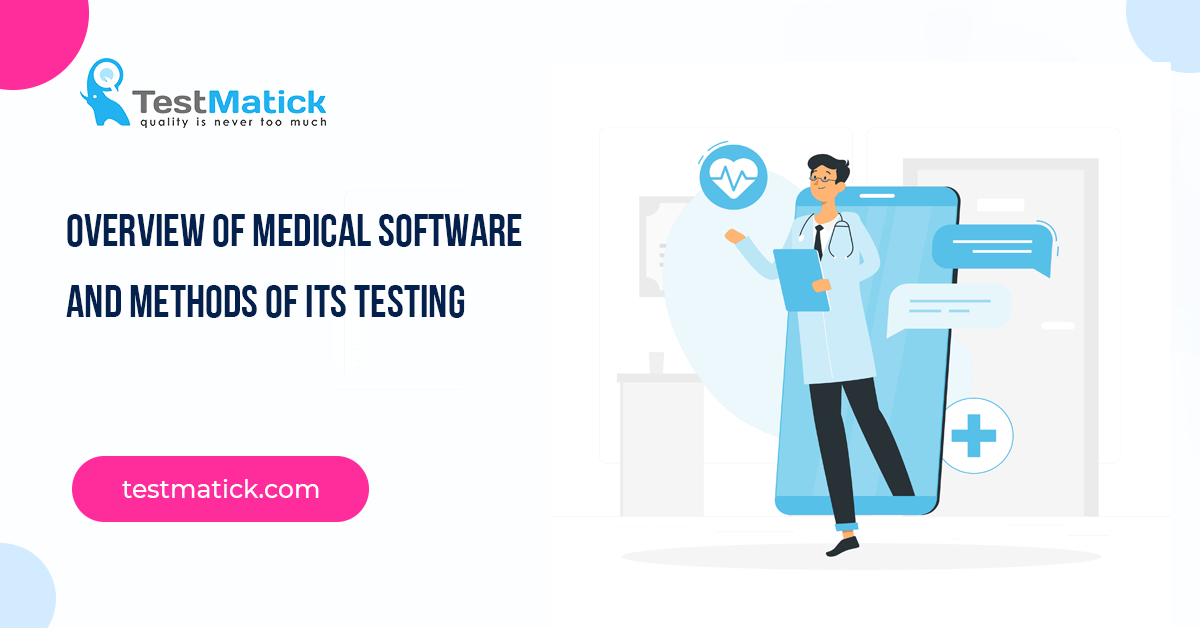A medical application is software developed for use in a branch of medicine and used by staff working at medical facilities (such as doctors and sometimes – nurses) and patients.
Applications can be used in different fields of medical services, therefore each of them has different functional features.
These are applications developed specifically for specialized hospitals and for the entire medical field.
Products developed for gathering and storing patient data are important but these applications should be protected against the disclosure of patient’s personal information.
Testing medical software is not quite different from testing other types of software.It only has some peculiarities together with usage of an interactive methodology.
How should we test medical software?
QA services for medical software are a process and a result of the work of a specialist who tests this product.
A developer should maintain software and a tester should eliminate bugs.
This software helps medical workers to simplify diagnosing and applying some type of medicine, taking its dosing into account.
Testing medical software covers a field of storing and processing personal data that requires a high level of protection.
A testing specialist should ensure that code has no critical bugs.There is personal and clinical data storage.
And you should remember while testing that these are two different processes, therefore there should be a possibility to send a request from the database omitting authorization.
User’s tastes are taken into account while developing medical services.
Testing should be performed from a user’s side and then test scripts should be designed.
It’s because such services have specific content and a specialist should conduct a thorough analysis and find a connection between parameters and only after this, perform testing of this product.
If a product is not properly tested or doesn’t work properly, it should not be released since this may result in negative consequences for a user and a team of developers including QA engineers, clients.
This may lead to fines and a spoiled image.Proper testing can be achieved by:
- Studying specifications that should contain all technical features including the product description and product usage;
- Identifying the conditions that meet software requirements.
Special attention should be paid to testing all levels:
- Software testing (testing conditions and requirements to product-in-development, applying automation and end-to-end testing, performance testing, etc.);
- Requirements for software testing (security testing, functional testing, etc.);
- Requirements for software design testing (testing security standards and design, testing specification for accuracy and correspondence);
- Code testing (testing the approved product requirements, using methods to find defects and bugs, analyzing and testing source code quality);
- Single testing;
- Requirements for accessibility testing (testing the correspondence to ISO 13485, IEC 62304, IEC 82304-1 standard).
IEC 62304 is international standard requirements for medical software lifecycle and medical equipment software. These standards are supported in the EU and US.
Security classes
According to IEC 62304 standard, software should meet security classes:
- Class A: no harm to health, no risk of injuries. This class of software documentation consists of a plan of development and analysis of software requirements. Development of software module and system testing. Software release.
- Class B: a possibility to get minor injuries. This class contains the following software documentation: a plan of development and analysis of software requirements. Software design architecture. Development and testing of software module. Integration and testing of software. Testing and releasing a product.
- Class C: a possibility to get serious injuries, fatal. This class of software documentation contains: a plan of development and analysis of software requirements. Software development architecture. Software design. Development and testing of software module. Integration and testing of software. Testing and releasing a product.
Using documentation while testing helps to release qualitative software if you implement all requirements and conditions written in the document including the information on testing of a product together with a material-evidentiary basis.










Leave A Comment